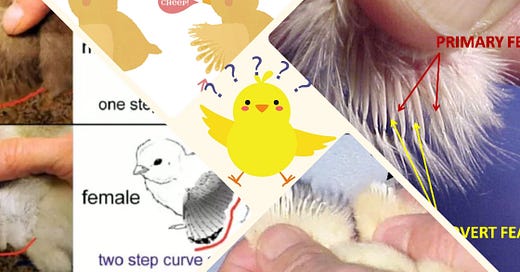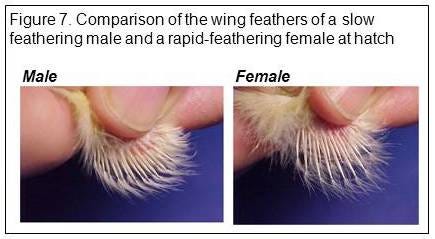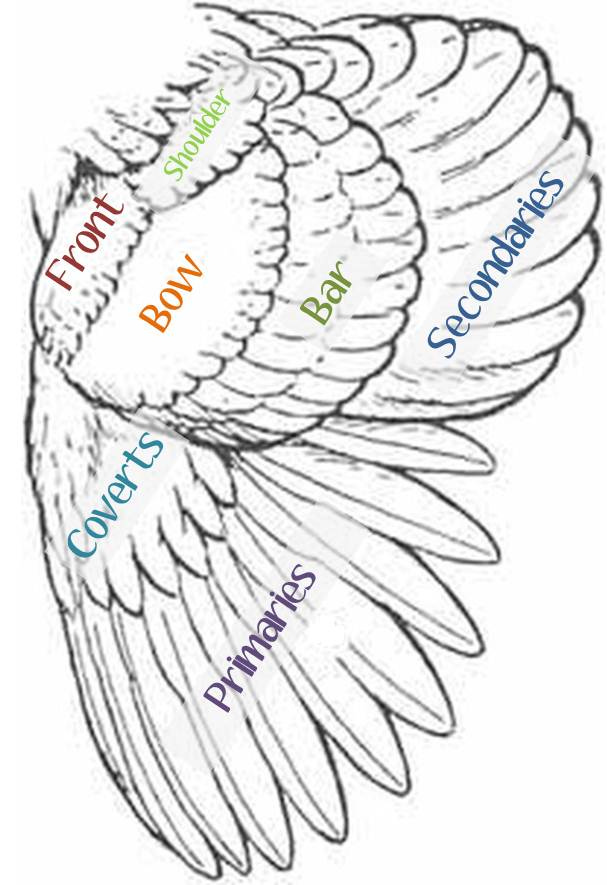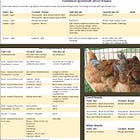I’ve been researching these articles for months. It was going to be this nice simple single page on the topic (*insert wry laugh*). The more I researched, the more I found.
In the end, I had to break it up into multiple sections, because I had to do a proper job on it. And even then, what I’ve written is, I suspect, little more than an overview.
The sections are:
Part 3: Slow- and fast-feathering (this article)
Note that due to the vagaries of Substack, which doesn’t have the ability to create tables, any tables are created them as downloadable PDFs. The table images are linked to the PDF so you can download and print them for your own use; click on the image to open the PDF.
If you find them useful and wish to share, please reference them back to this Substack article: I’ve spent a lot of time on these!
Contents
Mediterranean breed males
Slow-feathering females - breeds in Australia
Slow-feathering females - breeds not in Australia
The genetics behind feather-sexing
The K gene
The principle
Feather-sexing: slow- and fast-feathering crosses
Any discussion about sexing chicks invariably comes up with this feather-length diagram, or something similar, with the suggestion that it will work on any chick up to quite a mature age.
Photo by Dr. Jacquie Jacob, University of Kentucky.
You look closely at the new feathers at the very tip of the wing. There are sort of two “rows” of feathers - the “covert” (coverage) feathers and the “primary” (wingtip) feathers.
Cockerel feathers are all basically the same length, or the covert feathers may be longer than the primaries. Their feathers develop more slowly.
Pullet feathers have much shorter coverts interspersed with the much longer primaries. Their feathers are developing more quickly.
The thing is that it IS reliable, but only in very particular breeds or crossbreeds and only at day-old.
There are other images that claim to identify chicks at older ages. Again, they may work, but only on specific breeds or crosses. It is not a reliable method for all chicks of all types.
How does feather-sexing work?
Many chicks will have covert and primary down feathers of varying lengths. The relative sizes will not, however, automatically indicate the sex of the chick. It only reliably works with the correct cross.
With the right cross, the male chicks inherit the slow-feathering gene, which causes some of their feathers - particularly on the wing and, as they grow older, shoulders and back - to grow more slowly than female chicks of the same age and breed or crossbreed.
Once inherited, the gene can be used to sex the chicks at hatch.
It only applies to day-old chicks, and it can’t be broadly applied to all breeds or crossbreeds.
It’s created when a normal-feathering male (cockerel or rooster) is mated with a fast-feathering female (pullet or hen).
There are genetic reasons for why it works reliably, and I don’t actually understand them at all, because chicken genetics isn’t something I’ve concentrated on to this point. I’ve pasted in some information and useful links at the bottom of this article if you want to follow up yourself.
How do I create this sexlink?
In a first-cross sexlink, this involves mating a Mediterranean breed male (for example Leghorn, Ancona, Minorca) with a specific heavy-breed dual-purpose hen (for example Plymouth Rock, Rhode Island Red, Wyandotte).
Like the down colour crosses, it must be in that order; it doesn’t work the other way around.
This seems to be the main method used to produce sex-linked white commercial layers such as the ISA White or Bond White.
Workable pairings
In the following lists, colour is not relevant for the slow-feather gene alone. You can use any breed from each list, and the offspring should be sexable using the diagram.
However, I can’t help but notice that there is a significant overlap of breeds with the Gold/Silver/Barred sex-link cross.
I can’t see why, therefore, you couldn’t combine the two options, to produce chicks that can be sexed by both down colour and wing-feather size. It could be a handy backup for those occasions where Mother Nature throws the genetic dice and what we mere humans take to be “rules” turn out to be simply loose guidelines, at best.
For example:
Using a gold-coloured Mediterranean male with a silver-coloured heavy-breed female should produce:
buff-coloured pullets with fast-growing wingfeathers
silver/white coloured cockerels with slow-growing wingfeathers.
Using a solid-coloured Mediterranean male with a cuckoo-patterned heavy-feathered female should produce:
solid-coloured pullets with fast-growing wingfeathers
cockerels with a white spot on the head and slow-growing wingfeathers.
Mediterranean breed males
Ancona (red Ancona is gold-based)
Andalusian
Buttercup
Leghorn (brown Leghorn is gold-based. White Leghorn can be gold-based, but it can be unreliable)
Minorca
Spanish
Slow-feathering females - breeds in Australia
Brahma (columbian pattern is silver-based; also comes in cuckoo)
Rock (Plymouth Rock is classic barred heavy-feather breed)
Cochin (may have both silver and barred colour variants)
Langshan
New Hampshire
Orpington
Rhode Island Red
Rhode Island White (silver-based)
Wyandotte (columbian and black/blue-laced silver pattern is silver-based; also comes in cuckoo, although rare in Australia)
Slow-feathering females - breeds not in Australia
I don’t know about these breeds to make any guesses about silver/cuckoo patterns.
Java
Jersey Giant
Buckeye
Chantecler
Dominique
Lamona
These linkages can be found in the tables as well.
The genetics behind feather-sexing
For a detailed overview of the genetics behind slow-feathering, these articles have been helpful.
University of Kentucky Department of Animal & Food Sciences: Sex-Linked Crosses
Hendrix Genetics: Feather sexing in Day-Old chicks
Poultry Extension: Sexing Day-old Chicks
I have shamelessly pasted some content from the Hendrix Genetics website article in here. Please read the full article for the details.
To understand poultry genetics, you first need to understand that unlike humans that are XX female/XY male, chickens are ZW female/ZZ male.
The K gene
The fast- or slow- feathering genotype is determined by the K gene (the feather development gene). The K gene is located on the Z chromosome (female chickens are ZW, male chickens are ZZ) and can be used to produce the fast and slow feathered phenotypes that distinguish between the male and female day-old chicks.
The Principle
When fast-feathered k+k+ roosters are mated to slow-feathered K hens, the sex of their offspring can be easily recognised at the day of hatch, with fast-feathered female chicks k+ and slow-feathered male chicks Kk+.
This difference in feathering happens because female birds carry a single Z chromosome (sex chromosome), while the male birds carry two Z chromosomes.
There are 4 known alleles at the K locus, in the following order of dominance: Kn > Ks > K > k+.
Mixing them produces the results in this table.
Want more? Read the other articles in this series:
Part 3: Slow- and fast-feathering (this article)








